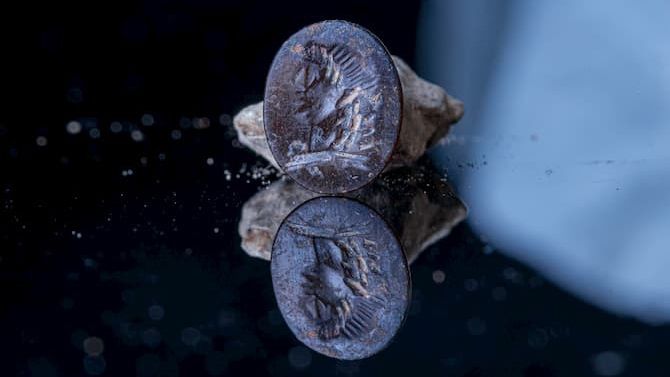Seal with the Greek god Apollo
Categories: Finds and rescue research abroad , Nálezy nejenom s detektorem na blízkém východě
Archaeologists have discovered a 2,000-year-old seal in Jerusalem bearing the image of the god Apollo. But the owner was probably neither Greek nor Roman, experts say. The seal is made of brown jasper.
It is an opaque variety of chalcedony that comes in several colours. The owner of the found seal was probably a Jew living in the first century AD who admired things associated with Apollo.
"But I don't think he believed in him in any way. He was apparently a monotheistic person. But he liked the virtues that the god Apollo was associated with. It was light, purity, health, success. These are very positive and unusual attributes. Everyone wants to have them," said Israeli archaeologist Eli Shukron.
The gemstone, in which the god Apollo is carved, was discovered by archaeologists at the foundations of a western ancient abutment wall that once surrounded the Second Temple of the Jewish people, which the Romans destroyed in 70 AD.
The oval seal is relatively small. It is 1.3 centimetres high, just over a centimetre wide and about 0.3 centimetres thick. This is only the third such seal to be found. The image on it was made on the principle of intaglio printing.
According to archaeologists, the seal was probably part of a ring used as a seal for contracts, letters, wills, documents for goods or bundles of money. The Apollo depicted on the seal has long hair flowing over his broad neck. He also has a large nose, thick lips and a prominent chin.
"It is rare to find such an item bearing the image of the god Apollo in places where a predominantly Jewish population lives. When we found the gem, we asked ourselves what he was doing in Jerusalem and why a Jew would wear a ring with the portrait of a foreign god. He probably really liked the qualities this god was connected to and wanted to be associated with them as well, so he pointed them out," the archaeologists believe.
The unknown Jew possessed the seal about two thousand years ago. Apollo was one of the most respected and popular gods. His oracle stood on Crete. "Whoever made the gem left yellow-gold and light brown layers in Apollo's hair. This was probably to emphasize the light aspect of the divine personality, and also the aura that surrounded his head. The interconnection of light and sun fascinated some Jews," said Shua Amorai-Stark, an expert in gemstone engraving at the University of Beersheva.
Video



Sources: www.livescience.com
The article is included in categories: